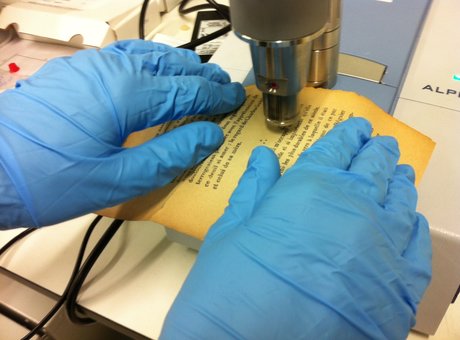Damage function for historic paper. Part I: Fitness for use

1 December 2015
Background: In heritage science literature and in preventive conservation practice, damage functions are used to model material behaviour and specifically damage (unacceptable change), as a result of the presence of a stressor over time. For such functions to be of use in the context of collection management, it is important to define a range of parameters, such as who the stakeholders are (e.g. the public, curators, researchers), the mode of use (e.g. display, storage, manual handling), the long-term planning horizon (i.e. when in the future it is deemed acceptable for an item to become damaged or unfit for use), and what the threshold of damage is, i.e. extent of physical change assessed as damage. Results: In this paper, we explore the threshold of fitness for use for archival and library paper documents used for display or reading in the context of access in reading rooms by the general public. Change is considered in the context of discolouration and mechanical deterioration such as tears and missing pieces: forms of physical deterioration that accumulate with time in libraries and archives. We also explore whether the threshold fitness for use is defined differently for objects perceived to be of different value, and for different modes of use. The data were collected in a series of fitness-for-use workshops carried out with readers/visitors in heritage institutions using principles of Design of Experiments. Conclusions: The results show that when no particular value is pre-assigned to an archival or library document, missing pieces influenced readers/visitors' subjective judgements of fitness-for-use to a greater extent than did discolouration and tears (which had little or no influence). This finding was most apparent in the display context in comparison to the reading room context. The finding also best applied when readers/visitors were not given a value scenario (in comparison to when they were asked to think about the document having personal or historic value). It can be estimated that, in general, items become unfit when text is evidently missing. However, if the visitor/reader is prompted to think of a document in terms of its historic value, then change in a document has little impact on fitness for use.
Damage function for historic paper. Part I: Fitness for use. Heritage Science, 3 (1), 1-12.
Strlic, M., Grossi, C.M., Dillon, C., Bell, N., Fouseki, K., Brimblecombe, P. Thickett, D. (2015)
 Close
Close

